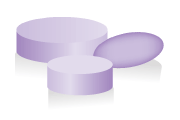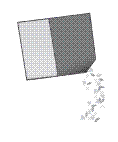Mesalazine (oral) for inflammatory bowel disease
This leaflet is for parents and carers about how to use this medicine in children. Our information may differ from that provided by the manufacturers, because their information usually relates to adults. Read this leaflet carefully. Keep it somewhere safe so that you can read it again.
Your child should not have Mesalazine if they are allergic to aspirin or other salicylate drugs.
Name of medicine
Mesalazine
Brand names: Asacol MR, Ipocol, Mesren MR, Pentasa, Salofalk, Mezavant
Why is it important for my child to take Mesalazine?
In inflammatory bowel diseases (Crohn’s disease and ulcerative colitis), parts of the colon (large intestine), small intestine and rectum (back passage) become inflamed (red, swollen and sore) and ulcers (sores) may form. This causes symptoms such as diarrhoea, stomach cramps and bleeding from the rectum.
Mesalazine reduces the inflammation in the bowels and so reduces the painful symptoms. It can also prevent future flareups of the disease. It is therefore important that your child continues to take mesalazine once the symptoms have gone.
What is Mesalazine available as?
- Tablets: Asacol MR (these contain a small amount of lactose): 400 mg (red), 800 mg (red–brown); Ipocol: 400 mg (red); Mesren MR: 400 mg (red-brown); Pentasa: 500 mg (grey); Salofalk: 250 mg (yellow); Mezavant: 1200 mg (red-brown)
- Granules: Pentasa: 1 g, 2 g; Salofalk (these contain aspartame): 500 mg, 1 g, 1.5 g
When should I give Mesalazine
Mesalazine may be given once, twice or three times a day, depending on which brand your child has. The medicine label will tell you how often to give it to your child.
- Once a day (Mezavant tablets): Mezavant tablets should be given with some food.
- Twice a day: give one dose in the morning and one in the evening. Ideally, 10–12 hours apart, for example between 7 and 8 am, and between 7 and 8 pm.
- Three times a day: Ideally, at least 6 hours apart.
How much should I give?
Your doctor will work out the amount of Mesalazine (the dose) that is right for your child. The dose will be shown on the medicine label.
It is important that you follow your doctor’s instructions about how much to give.
How should I give Mesalazine?

Tablets
- Tablets must be swallowed whole with a glass of water, juice, or squash. Your child should not chew the tablet. Tablets should not be crushed.
Pentasa tablets
- These can be cut in half or into quarters, but should not be crushed. Or, they can be dissolved in a small amount of drink (squash or water) to make a cloudy mixture. Your child should drink the whole drink as soon as the tablet has dissolved. Do not do this with other brands of tablets.

Granules
- Granules should be placed on the tongue and swallowed with a glass of water, squash, or juice. Your child should not chew the granules.
When should the medicine start working?
Mesalazine will start working straight away but it may take a week or so for your child’s symptoms to improve. It will take a few months for the symptoms to go away completely, as it takes time for the intestine to heal.
It is important that your child continues to take the medicine regularly so that the symptoms don’t flare up again.
What if my child is sick (vomits)?
- If your child is sick less than 30 minutes after having a dose of Mesalazine, give them the same dose again.
- If your child is sick more than 30 minutes after having a dose of Mesalazine, do not give them another dose. Wait until the next normal dose.
If your child is sick again, seek advice from your family doctor, nurse, pharmacist, or hospital. They will decide what to do based on your child’s condition and the specific medicine involved.
What if I forget to give it?
If you normally give it once or twice each day: If you remember up to 6 hours after you should have given a dose, give your child the missed dose. For example, if you usually give a dose at about 7 am, you can give the missed dose at any time before 1 pm. If you remember after that time, do not give the missed dose. Wait until the next normal dose. You do not need to wake your child up to give a missed dose.
If you usually give it three or four times a day: You do not need to give the missed dose. Give the next dose as normal.
What if I give too much?
You are unlikely to cause harm if you give an extra dose of Mesalazine by mistake. If you are concerned that you may have given too much, contact your doctor or local NHS services (details at end of leaflet). Have the medicine or packaging with you if you telephone for advice.
Are there any possible side effects?
We use medicines to make our children better, but sometimes they have other effects that we don’t want (side effects).
Side effects you must do something about
If your child is short of breath or is wheezing, or their face, lips or tongue start to swell, or they develop a rash, they may be allergic to Mesalazine. Take your child to hospital or phone for an ambulance straight away.
The skin or whites of the eyes become yellow (jaundice) or the stools (poo) are pale or the urine dark – there may be a problem with your child’s liver.
Unexplained bruising, bleeding (e.g. nose bleeds), purple spots under the skin, sore throat, high temperature (above 38°C), or they are pale, or feel unwell and tired – the medicine may have affected your child’s blood.
Other side-effects you need to know about
- Your child may feel sick (nausea), get flatulence (wind), mild diarrhoea or mild stomach pains when they first start taking mesalazine. It may help to give each dose with some food.
- Your child may get mild headaches. If headaches are severe, contact your doctor.
- Your child may get a mild rash or itching when they first start taking mesalazine. You can give your child an antihistamine or use an anti-itch cream to help.
- Your child may have numbness and tingling (pain and burning) in the fingers or toes or muscle or joint pains.
These should all wear off after a few days. If you are worried, or they are still a problem after a week, or get worse, contact your doctor.
- Your child may lose some hair. Tell your doctor about this at your next visit.
Your child’s skin may become more sensitive to sunlight. Keep them out of strong sun. When outdoors, they should wear a long-sleeved top, trousers and a hat and should use a high-factor sun cream (at least SPF 30).
There may sometimes be other side effects that are not listed above. If you notice anything unusual and are concerned, contact your doctor. You can report any suspected side effects to a UK safety scheme at mhra.gov.uk/yellowcard
Can other medicines be given at the same time as Mesalazine?
Asacol, Ipocol or Salofalk tablets should not be taken at the same time as antacids/indigestion remedies (chalky/ milky type). These can be given at least 2 hours before or after mesalazine.
If your child is allergic to aspirin or other salicylate drugs, they should not take Mesalazine.
Is there anything else I need to know about this medicine?
- It is important that your child does not become dehydrated (lack of water). If you think your child may be dehydrated, give them water to drink and contact your doctor, nurse, or pharmacist for advice.
- You may see whole tablets or the tablet shell in your child’s bowel motions (poo). If this happens frequently, contact your doctor.
- Your child should always have the same brand of tablets or granules, as the different brands work in slightly different ways and may not give the same results.
- Your doctor will do blood tests to check your child’s kidney function before starting mesalazine, after 3 months and then once a year.
General advice about medicines
- Try to give medicines at about the same times each day, to help you remember.
- Only give this medicine to your child. Never give it to anyone else, even if their condition appears to be the same, as this could do harm.
- If you think someone else may have taken the medicine by accident, contact your doctor or NHS local services (details at end of leaflet) for advice.
- Make sure that you always have enough medicine. Order a new prescription at least 2 weeks before you will run out.
- Make sure that the medicines you have at home have not reached the ‘use by’ date on the packaging. Give old medicines to your pharmacist to dispose of.
- If you are not sure a medicine is working, contact your doctor but continue to give the medicine as usual in the meantime. Do not give extra doses, as you may do harm.
Where should I keep this medicine?
- Keep the medicine in a cupboard, away from heat and direct sunlight.
- It does not need to be kept in the fridge.
- Make sure that children cannot see or reach the medicine.
- Keep the medicine in the container it came in.
Who to contact for more information?
Your doctor, pharmacist or nurse will be able to give you more information about Mesalazine and about other medicines used to treat inflammatory bowel disease.
England: NHS 111
Tel 111
www.nhs.ukScotland: NHS 24
Tel 111
www.nhs24.scotNorthern Ireland: NI Direct
Wales: NHS 111 Wales
Tel 111
www.111.wales.nhs.ukCrohn's and Colitis UK
0300 222 5700
www.crohnsandcolitis.org.uk/Crohn's in Childhood Research Association (CICRA)
020 8949 6209
www.cicra.org/Copyright disclaimer
Version [1]. © NPPG, RCPCH and WellChild, all rights reserved. Review by January 2014.
The primary source for the information in this leaflet is the British National Formulary for Children. For details on any other sources used for this leaflet, please contact us through our website, www.medicinesforchildren.org.uk.
We take great care to make sure that the information in this leaflet is correct and up-to-date. However, medicines can be used in different ways for different patients. It is important that you ask the advice of your doctor or pharmacist if you are not sure about something. This leaflet is about the use of these medicines in the UK, and may not apply to other countries. The Royal College of Paediatrics and Child Health (RCPCH), the Neonatal and Paediatric Pharmacists Group (NPPG), WellChild and the contributors and editors cannot be held responsible for the accuracy of information, omissions of information, or any actions that may be taken as a consequence of reading this leaflet.
